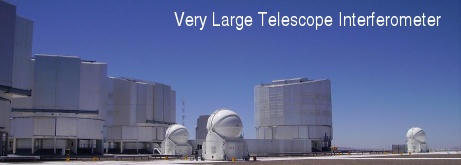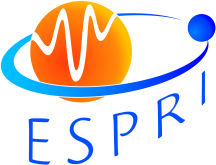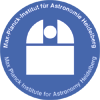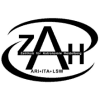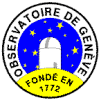| February 2015 |
Launch of NACO L-band direct imaging GTO survey
The ESPRI consortium discusses alternative possibilities of using the granted GTO for exoplanet-related science
with existing ESO instrumentation. A decision is made to propose a large L-band direct imaging survey with NACO
for giant planets around nearby young stars. The proposal is approved by council for 120 UT nights with NACO,
spread over 4.5 years. The survey will start end of 2015. A corresonding new project web page is under construction.
|
| June 2014 |
ESO decides to cancel the PRIMA project
(albeit no official cancellation notice has been released yet). This is also the early end
of the original ESPRI project. We are now evaluating the possibilities for an alternative
exoplanet-related GTO science program with other ESO instruments.
|
| January 2014 |
PRIMA Gate Review
at ESO headquarters to evaluate ESO's recovery plan for PRIMA (to solve technical problems and reach
scientific requirements on sensitivity and baseline stability) and the exoplanet science
case in view of the long delays and Gaia. This recovery plan would require 3-4 more years and heavy hardware
investments for technical upgrades to the ATs and VLTI.
|
| December 2012 |
ESPRI project paper #1 accepted:
Instrument description and performance of first light observations.
Paper #2 on ESPRI science is in preparation.
|
| July 2012 |
Analysis team recommendations and implementation
The two main recommendations are:
1) replace STS@AT3 (misalignments, optical quality, successfully done in October 2012)
2) move metrology endpoint up to M2 (prototype in June 2012)
However, first tests showed that the extended metrology train introduces polarization problems that
let the metrology break down.
Possible solutions are worked on throughout 2012. If successful, there will be more technical runs
before astrometric commissioning might resume (not before mid 2013).
|
| December 2011 |
Astrometric commissioning interrupted
A red flag report was issued to the DG because the last two of three astrometric commissioning runs
revealed large astrometric residuals that are not calibratable. An analysis team is installed that
will re-analyze the entire system to find solutions.
|
| February 2011 |
PRIMA is now alive!
The PRIMA astrometric functions are now fully operational and faint
object off-axis fringe locking was demonstrated on its most
fundamental principle with a "frozen fringe exposure" of 3 minutes!
(a world premiere technical achievement in astronomy)
The true astrometric commissioning of PRIMA with the ATs will begin in July 2011.
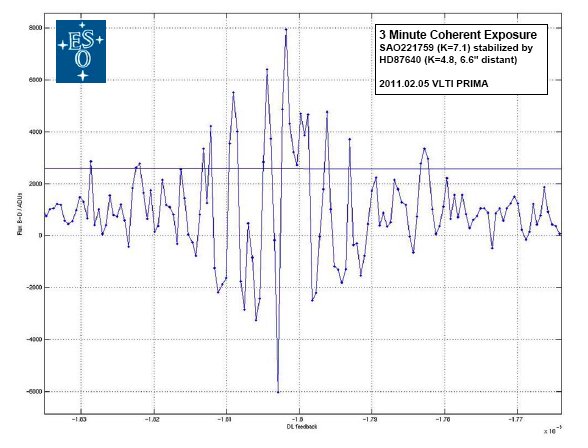
|
| 10 July 2010 |
First dual-beam fringe-tracking
PRIMA works for the first time as a dual-star interferometer!
The first dual-star fringe-tracking was achieved on July 10, 2010, during
commissioning run No. 11. Though still without the metrology that ties
the two sub-interferometers together, this marks the transition from
subsystem testing to PRIMA system commissioning.
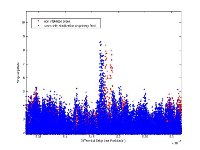
|
| Feb 2010 |
Testing of DRS routines
Started systematic testing of DRS routines with (single-feed) commissioning data
|
| March 2009 |
PRIMA subsystem commissioning
will last throughout 2009.
Dual-feed (astrometric) commissioning is anticipated to start in Summer 2010.
|
| 03 Sept. 2008 |
First light for PRIMA!
At end of AIV, FSU A has seen first fringes on sky, with AT1 and AT2 on
baseline A0-D0. The target was HD19343 (K=0.44mag)
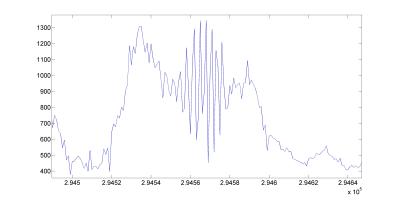
|
| August 2008 |
DDLs shipped to Paranal
DDLs shipped to Paranal, integrated in VLTI Lab, and
aligned with PRIMA
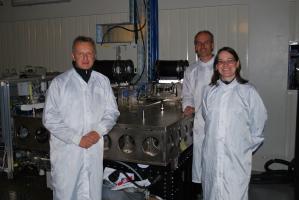
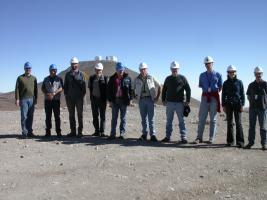
|
| 01 April 2008 |
Cat's eyes shipped to Geneva
Cat's eyes shipped to Geneva for Integration into DDLs and PAE tests.
DDL "christening" celebrated during 8th ESPRI Science Team meeting on
1st April 2008 with swiss chacolate DDLs and Champaine.
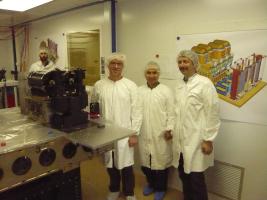
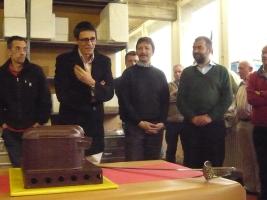
|
| 01 Feb. 2008 |
Website updated
Again, the format of this ESPRI website was updated.
|
| 3 September 2007 |
DDL at MPIA
The Differential Delay Line (DDL) arrived at the
MPIA site in Heidelberg, after delivery from the manufacturer Axsys.
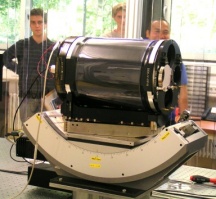
ESPRI
team members viewing the hardware in the MPIA interferometric
laboratory.
|
| 19 July 2007 |
Website updated
The format of this ESPRI website was updated.
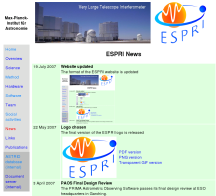
|
| 22 May 2007 |
Logo chosen
The final version of the ESPRI logo has been released.
|
| 3 April 2007 |
PAOS Final Design Review
The PRIMA Astrometric Observing Software passed its
final design review at ESO headquarters in Garching.
|
